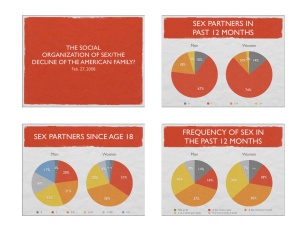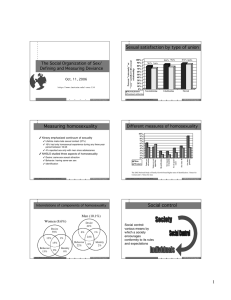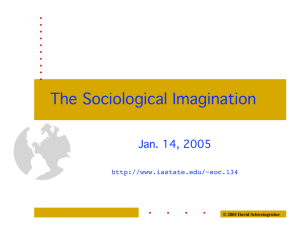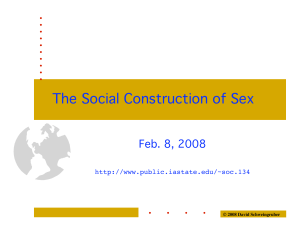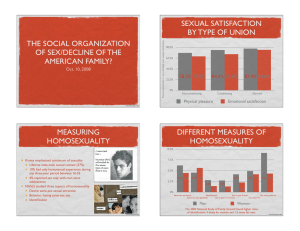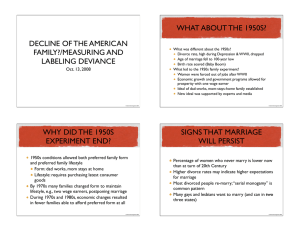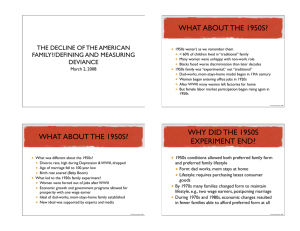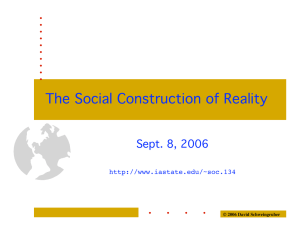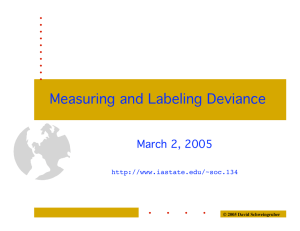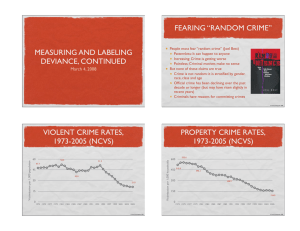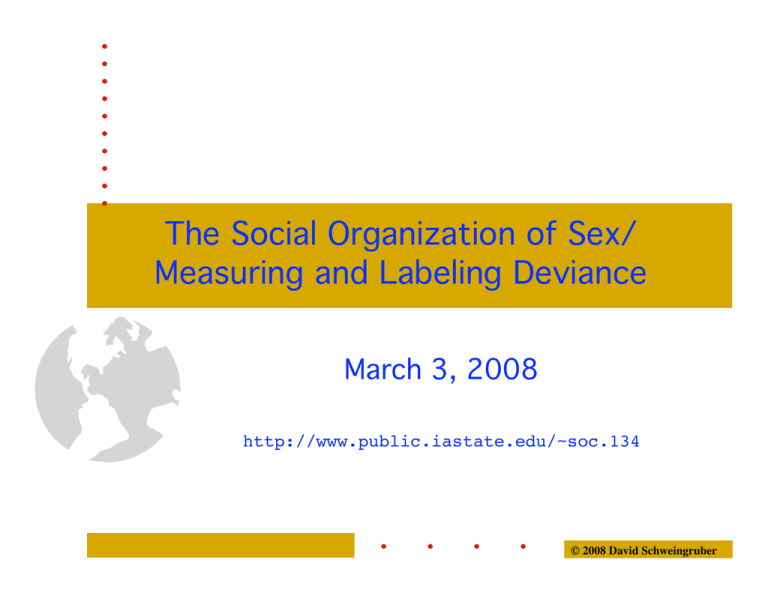
The Social Organization of Sex/
Measuring and Labeling Deviance
March 3, 2008
http://www.public.iastate.edu/~soc.134
© 2008 David Schweingruber
Percent "extremely" or
"very" satisfied with sexual
relationship
Sexual satisfaction by type of union
100%
90%
80%
70%
60%
50%
40%
30%
20%
10%
0%
84.4% 75.6%
87.4% 84.8%
78.2% 71.0%
Noncohabitating
Physical pleasure
Emotional satisfaction
Source: Michael, et al. 1994. Sex in America. Little, Brown.
Cohabitanting
Married
©©2008
2000David
DavidSchweingruber
Schweingruber
Measuring homosexuality
Kinsey emphasized continuum of
sexuality
Lifetime male-male sexual contact
(37%)
10% had only homosexual
experience during any three-year
period between 16-55
4% reported sex only with men
since adolescence
NHSLS studied three aspects of
homosexuality
Desire: same-sex sexual attraction
Behavior: having same-sex sex
Identification
Source: Michael, et al. 1994. Sex in America. Little, Brown.
©©2008
2000David
DavidSchweingruber
Schweingruber
Sex since
puberty
Sex since 18
Sex in past 5
years
Sex in past
12 months
Identification
Men
Women
Same-sex sex
appealing
10%
9%
8%
7%
6%
5%
4%
3%
2%
1%
0%
Same sexattraction
Different measures of homosexuality
The 2002 National Study of Family Growth found higher rates of identification: 3 times for
women and 1.5 times for men.
Source: Michael, et al. 1994. Sex in America. Little, Brown.
©©2008
2000David
DavidSchweingruber
Schweingruber
Interrelations of components of homosexuality
Men (10.1%)
Women (8.6%)
Desire
59%
13%
6%
0%
1%
24%
1%
Behavior
22%
15%
Behavior
13%
Desire
44%
0%
Identity
2%
Identity
0%
Source: Michael, et al. 1994. Sex in America. Little, Brown.
©©2008
2000David
DavidSchweingruber
Schweingruber
Social control
Social control:
various means by
which a society
encourages
conformity to its rules
and expectations
©©2008
2000David
DavidSchweingruber
Schweingruber
Defining deviance
Deviance: behavior, belief or condition that violates social norms
• By defining what is normal, society defines what is deviant (relativist
approach to deviance)
Origin of term is in statistics—“deviation” is the difference between the
value of a given case and the group average
Sociologists began using “deviance” in 1950s to encompass four major
topics—crime and delinquency, mental illness, drug use/addiction, sexual
misbehavior
Different approaches to studying deviance:
• Why do people commit deviant acts? (causation approach)
• Why are some people labeled as deviant and what are effects of label?
(labeling theory)
• Why do rules and punishments benefit some groups more than others?
(conflict theory)
• Why are some forms of deviance considered problems and others are not?
(social problems approach)
©©2008
2000David
DavidSchweingruber
Schweingruber

